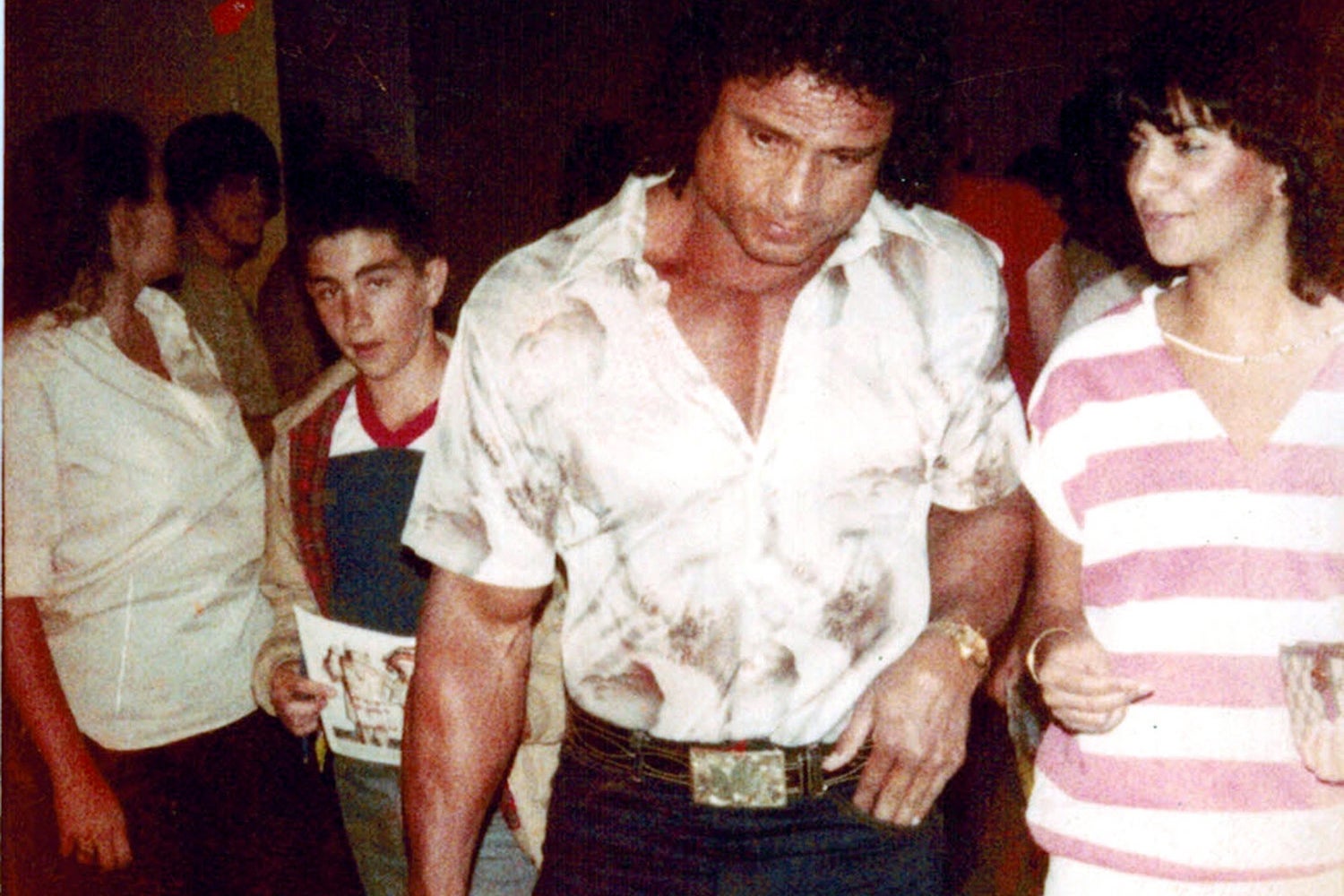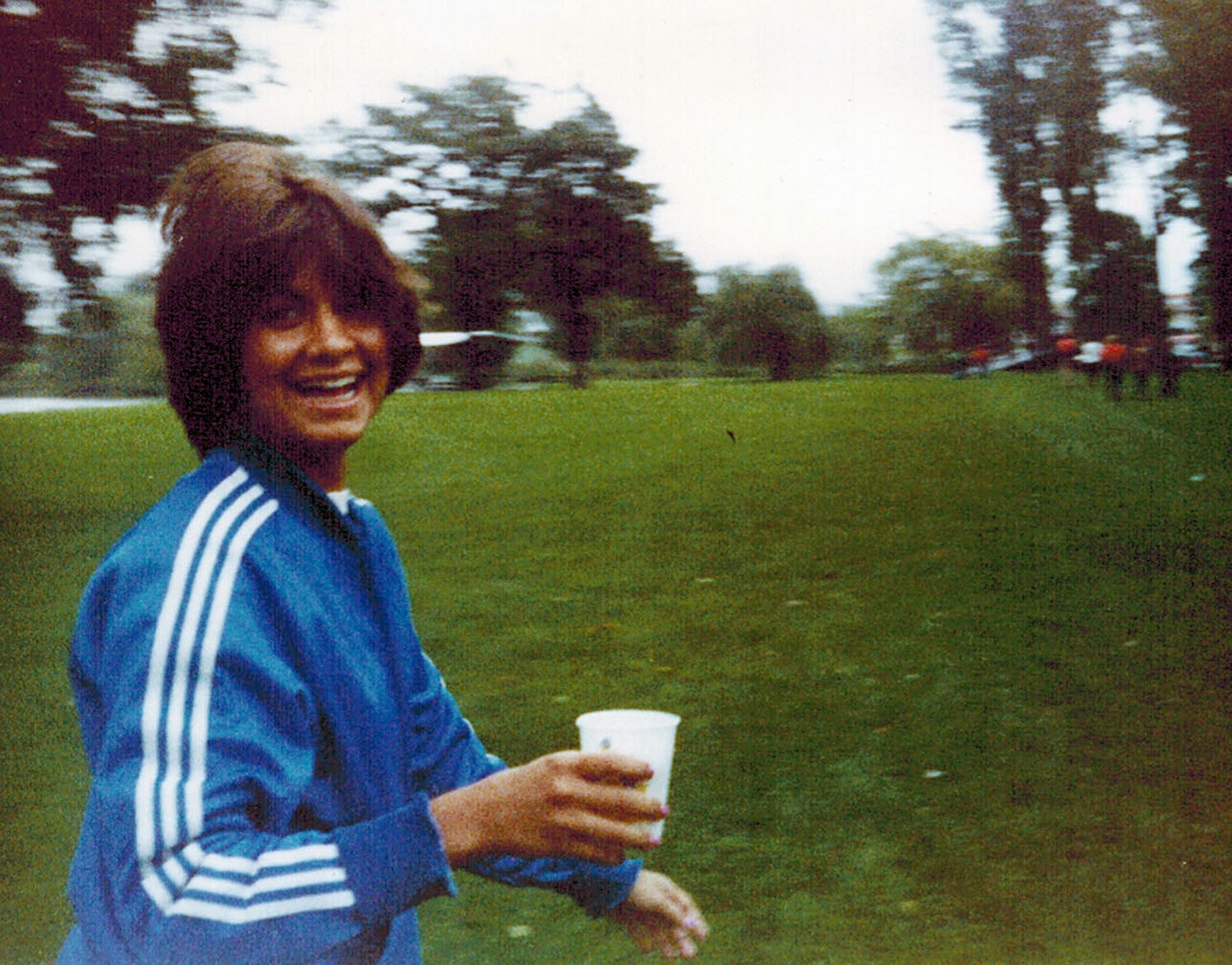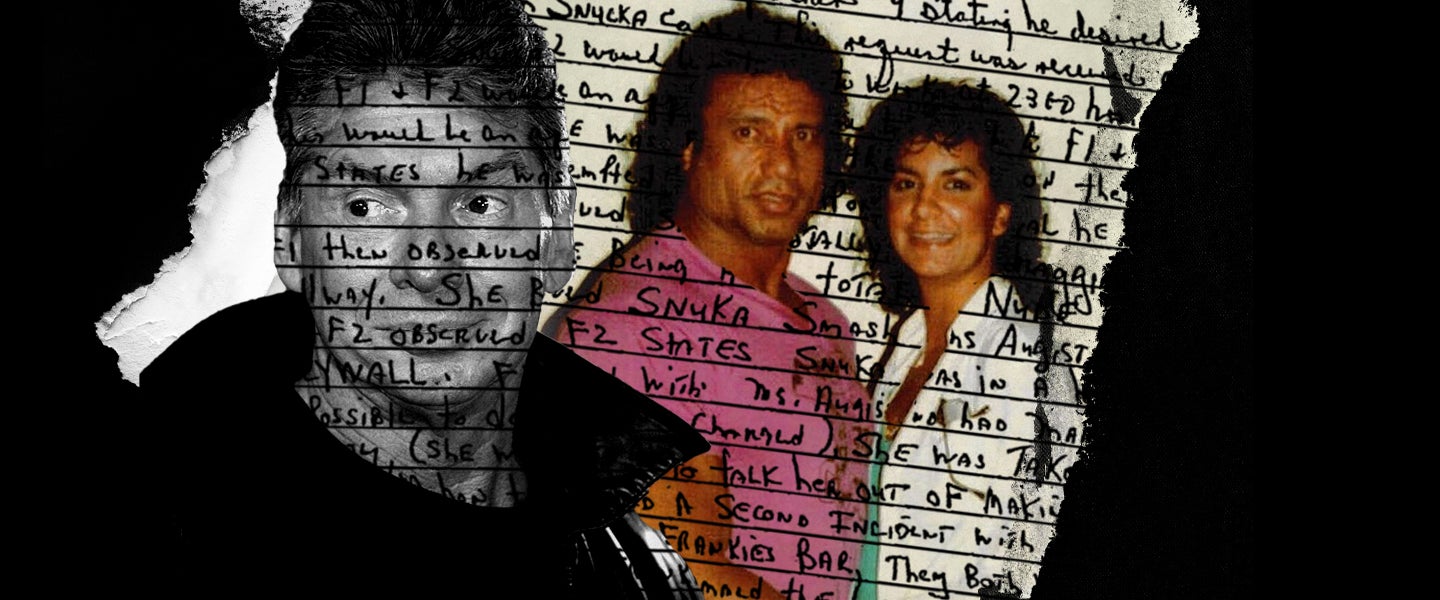As those in the center of the true crime/wrestling fan Venn diagram will likely be aware, VICE TV’s pro wrestling documentary series, Dark Side of the Ring, recently explored the May 11, 1983, death of Nancy Argentino, the then-girlfriend of then-top WWF (now WWE) star “Superfly” Jimmy Snuka. If you missed it, the immediate things you need to know are that Argentino died of complications from a skull fracture; that Snuka initially told a variety of stories that involved pushing her, only to change his tune — claiming she slipped and fell at the side of the road — after she died; that the coroner ruled it a homicide in a report that wasn’t made public; and that the case mysteriously stalled out after just three weeks.

These changing stories and the official manner of death weren’t known publicly until 2013, when the Allentown Morning Call discovered the autopsy report and a Snuka police interview transcript — both previously unavailable due to the case still being open — in court records from the Argentino family’s later wrongful death lawsuit against “Superfly.” That, and other provable incidents of domestic abuse described to the grand jury, led to an eventual indictment on murder charges, which were dismissed due to Snuka’s apparent mental incompetence mere days before his 2017 death from stomach cancer.
Specifically, those other incidents of domestic abuse were that of Snuka hospitalizing his then-wife Sharon in September 1983 (no charges filed, but testified to by both Sharon and then-neighbor Debbie Rogers); and Snuka’s January 18, 1983 arrest for beating Argentino. The latter made national headlines — not so much because a married celebrity had been arrested for beating his girlfriend in a Salina, New York, motel room, but rather because Snuka fought off a cadre of deputies and police dogs from the Onondaga County Sheriff’s Office in the process. Some outlets inexplicably found humor in it: The Associated Press wire story, for example, glosses over the underlying domestic violence, choosing to frame Snuka violently resisting arrest in joking terms like a pro wrestling match, using phrases such as “the match was on” and “a nine-deputy tag-team.” Local media wasn’t much better, with a short Syracuse Post-Standard item running with the headline, “Police, Dogs Win Round.”

The most detailed story, by Jeanne Bednarski in the Syracuse Herald-Journal, was failed by an editor who gave it the headline, “Judging by Bare Facts It Was Quite a Match.” Worse, it was accompanied by a cartoon mocking the ordeal. In a moment that, with hindsight, should have been the crossroads where someone intervened to help Argentino, the assembled media largely failed her, refusing to take her story seriously enough to tell it properly.
With regards to the actual events witnessed and lived by deputies at the Howard Johnson Motor Lodge, although the newspaper articles accurately describe the melee between Snuka and the Sheriff’s Department, the deputies had much more to say than the papers reported. According to the Sheriff’s Department file for the case, which I obtained via the Argentino family’s wrongful death lawsuit against Snuka, at least two officers on the scene witnessed Snuka resuming his attack on Argentino that same night.
Cynthia Porter, an officer in training, recalled in her affidavit that she could hear Argentino repeatedly cry “No, no, don’t do that!” from outside the room right before Sergeant Peter Bronstad showed up as backup.
“I moved to the other side of the doorway and saw a woman on the bed against the north wall of the room lying down crying and huddled in a fetal position,” added Bronstad, in his own affidavit. “At this point, [Snuka] attempted to close the door[,] but I started to talk to him about letting us in or her out. At that point, he opened the door further and walked towards the rear of the room, and the female got up wrapped in a bed sheet. She moved away as he strode toward her. At this point, he began to yell that if she wants to leave[,] go ahead. So I told her to come on out and she ran past him. As she did, I moved in front of the doorway and the male ran towards me and struck me in the chest area with his left forearm and pushed me against the wall. Recovering from that[,] I observed that the male had grabbed the female by her hair and was dragging her face along the wall (north) of the building.” (When I reached Bronstad recently, he basically told the same story, including volunteering the detail about Snuka resuming his attack on Argentino in front of him.)

That was when “several deputies” arrived and unsuccessfully tried to handcuff Snuka. “I got one handcuff on the hand he had the female by the hair with[,] which was his right hand[,] and after several seconds of struggling with him[,] he released his grasp on the female,” explained Bronstad in his affidavit. Bronstad would add that Argentino “complained of neck, head, back and hand injuries.” Per a separate statement from Deputy Lawrence Witter, those were diagnosed as “a bruised right thumb, contusion to the neck, possible fractured ribs and injury to the lower back.”
Snuka, in his ghostwritten memoir, brazenly claimed, “We were drinking and having a good time when all of a sudden, the police burst into our room.” He added, “I don’t know why they chose my room — maybe mine was the first one they passed — but they did.” In point of fact, they were there because of a call from Thomas Donovan, the motel’s night manager. Per Donovan’s statement in the Onondaga County file, the guests in the adjacent room called the front desk because their neighbors “were raising hell and a male was beating up a female in there.”
He called the room to no answer, walked over and heard the man inside say, “I’m sorry I hit you.” Being a 61-year-old man in 1983, he “then left and thought the problem was over.” But after he heard some “yelling,” he looked outside to see Argentino wrapped in a bed sheet, saw her return to the room, heard more “screaming” and then looked outside his office again. This time he saw Argentino, naked, soon followed by Snuka, also naked. “The male was forcing the female back towards room #1 while the female was yelling for help.”
After seeing this, Donovan finally called the Sheriff’s Department. (In his notes from a phone interview conducted with Bronstad and Deputy Alex Romanenko four days after Argentino was killed, Detective Gerald Procanyn describes the initial call from the motel in Salina as an attempted rape, but based on Bronstad’s interview with me, that appears to reflect the manager’s mistaken assumpion more than anything else.)
At first, it seemed as though Argentino was willing to pursue charges against Snuka. Her sisters, Louise Argentino and Lorraine Salome, tell me that they believe that this was the first time Snuka had gotten violent, meaning that Argentino’s resolve wouldn’t necessarily be worn down yet. Indeed, at the hospital, Argentino signed a release form to share her medical records with the Sheriff’s Department. In real time, though, all her sisters knew was that she went from calling late at night in a panic, saying Snuka was chasing her, to saying the next morning that nothing had happened beyond a misunderstanding.
That day, with Snuka’s lawyer, James Sparkes, acting as notary, she swore out an affidavit stating that she was “in no way seeking prosecution” against Snuka. She added that, in spite of Snuka being charged with a misdemeanor assault in the third degree for his attack on her, “he never struck me or intentionally harmed me in any way on January 18, 1983 nor at any other time in the past.” (The other charges leveled at Snuka were a felony assault count in the second degree and two more misdemeanors — counts of resisting arrest and obstructing government administration.)
The Onondaga County Sheriff’s Office file doesn’t contain any trace of an explanation as to why Argentino changed her mind. However, the file for the investigation of her murder from Pennsylvania’s Whitehall Township Bureau of Police — which I obtained from the same lawsuit appendix that included the New York file — points to one possible reason. In a single sentence summary from the same phone interview between Bronstad and Romanenko referenced above, Procanyn wrote, “Vince McMahon tried to talk her out of making the complaint against Snuka” (emphasis mine).

Yes, that Vince McMahon, then Snuka’s promoter as the owner of Titan Sports d/b/a the World Wrestling Federation, and now the chairman, CEO and owner of the WWF’s successor, World Wrestling Entertainment. When Argentino was killed, the WWF had been bringing its TV tapings to Allentown — which borders Whitehall — every three weeks for several years, making the company key to the local economy.
Some additional context is needed here to truly understand where both Snuka and McMahon stood at the time. Snuka, a cliff diver and bodybuilder with a vertical leap as impressive as his physique, was the WWF’s newly minted top good guy. If you bring up pro wrestling to someone from the Northeast whose fandom peaked around this time, they’ll inevitably: 1) gush about “Superfly” being their favorite; and 2) reminisce about imitating him by jumping off their bed or dresser. On top of being the top WWF star, Snuka, according to his then on-screen manager/real-life babysitter Buddy Rogers, also had a massive cocaine problem.
Snuka was big money, and with McMahon in the process of plotting a national expansion for his regional promotion — their initial trip to California was several weeks away — McMahon needed big money for everything he had planned. That’s to say nothing of any potential reputational harm to the organization.
On top of that, according to her sisters, Nancy also had her own specific value to McMahon: With Snuka being illiterate and without a driver’s license, McMahon needed a driver to get him to and from shows, but with his increasingly problematic drug use and erratic behavior, other wrestlers now refused to chauffeur him around.

When speaking to the Whitehall Police hours after Argentino died as the result of a skull fracture (four months after the New York motel room attack), McMahon backed up the claims around Snuka’s needing Argentino to be able to travel between live shows and taping venues. “[McMahon] states the victim actually guided Snuka from one area to another as Snuka has no conception of time,” Procanyn wrote in his report. “Snuka also has difficulty reading road signs.” In the same interview, McMahon would, in Procanyn’s words, tell the detective that he “did not ever see or hear of any problems between the victim and Snuka,” in spite of the New York arrest having been national news.
Speculation has long swirled around McMahon’s involvement in the murder investigation, specifically his presence during Snuka’s last police interview, the contents of which — unlike every other interview summary in the Whitehall file — are notoriously not described in the report at all (a fact that then-Chief Frederic Conjour wrote off as nothing in the VICE documentary). Snuka also didn’t help matters, with his memoir pointedly mentioning McMahon’s briefcase and dropping hints:
“Shortly after Nancy’s death, I was questioned by police and let go. At one point, I went with Vince McMahon Jr. to either a court or law office, I don’t remember which because I was still in shock. All I remember is he had a briefcase with him. I don’t know what happened. I think Vince Jr. picked me up from the hotel and took me there. He didn’t say anything to me. I don’t know if he gave Nancy’s family money or anything.”
Procanyn’s single line about McMahon while recounting the interview about the New York investigation, though, is the first time evidence of McMahon’s presence in the New York case has been offered in the public domain. (Reached by email, spokespeople for WWE didn’t respond to a request for comment on the discovery of McMahon’s involvement in the New York case.)

Procanyn, meanwhile, was no longer available at a phone number that he had been giving out last year; neither the Lehigh Valley DA’s office (where he worked more recently) nor the reporter who covered his retirement had updated contacts.
For the part of the retired members of the Onondaga County Sheriff’s Department, Romanenko died last year, and Bronstad, who wasn’t at the hospital, doesn’t remember hearing about McMahon involving himself. Bronstad does remember, though, that someone claiming to be Snuka’s manager showed up to post bail, going on and on about how he needed to be able to wrestle the next night. Bronstad, describing a shorter, older man wearing a hat, remembers being pissed off and quoting the “manager” a figure of $25,000 for Snuka’s bail, which would actually turn out to be just $5,000. The “manager” would quickly reply that the much larger figure — one which amounts to almost $66,000 with inflation — wasn’t an issue.
According to the contemporaneous newspaper reports, Snuka — who gave an exclusive, ramblingly vague account of what happened to the Toronto Star (“The hotel manager just got a little excited. Yeah, there was some excitement. The cops just didn’t give me the chance to explain. They blew it up, brother.”) — copped a plea for harassment and got a conditional discharge. Oh, and he’d donate $1,500 — his alleged “purse” for his return to Syracuse that same day — to Sheriff John Dillon’s favorite charity, the Ronald McDonald House.
Reality is seemingly more complicated: Sparkes, Snuka’s lawyer, had suggested not just a deal based on the donation and a public apology, but a public apology at the next local WWF event, at the Onondaga County War Memorial on April 7th, where he would leave tickets for the officers involved. “They do not want a public apology and would not be a part of it,” replied Lieutenant Paul Zemenz, the officers’ supervisor, in a letter sent back to Sparkes. “They definitely do not want any tickets reserved for them for the April 7th wrestling match and would not attend. If Snuka wanted to donate some money to a local charity … they would not be a part of it. They are not against the donation, only that it shouldn’t be tied in with the case or the Department.”
In the same letter, Zemenz appears to imply that Sparkes was attempting to get the charges dropped extrajudicially, as he added that the officers “felt that if any ‘plea bargain,’ etc., was done[,] it more properly should come from the District Attorney’s Office or the Courts.” More pointedly, he stipulated, “It was generally felt that this is turning into a publicity gimmick to benefit only Snuka, of which they want no part,” citing the media coverage. “They all felt that if any of the ‘offerings’ made by Snuka’s attorney were accepted (particularly in view of the publicity) that it would appear they were being ‘influenced’ into dropping the charges,” he added.
Even on the WWF side, the reaction was incredulous: “What [Snuka] wants to do in Syracuse is very unusual,” said ring announcer and office staffer Howard Finkel, credited as a company spokesman by the Post-Standard. “I’ve never heard of anything like it before.”
To the credit of the Sheriff’s Office, it looks like they did everything they should have both in terms of doing right by Nancy Argentino, and trying to avoid a public spectacle. The District Attorney’s office is arguably a different story. Assistant District Attorney Richard Plochocki, citing Argentino’s affidavit with regards to the assault on her person, and the potential negative effects on Snuka’s green card as a first-time offender, recommended a plea on a single charge of harassment. (According to a letter in the Onondaga County file, he left the sentence up to Justice Herman Harding.)
Indeed, contemporaneous newspaper accounts all reported Snuka as pleading down to harassment, with some mentioning his one-year conditional discharge. The donation, though, was often conflated with the sentence as if they were related, and none of the articles contained actual details of what happened in the courtroom beyond the disposition.
Complicating matters is Snuka’s alien file, obtained from U.S. Citizenship and Immigration Services in 2017 after his death, which actually contradicts those reports. Snuka, having lost his physical green card in 2007, began the process to get a new one, which included a new criminal background check. Though the records check from the Sheriff’s Office matched the four known charges, the Certificate of Conviction from the court says he “pled guilty to Assault 3rd” while being sentenced to his one-year conditional discharge.

Nobody I’ve spoken to — from Argentino’s sisters, to law enforcement officers, to Snuka’s lawyer — has any recollection of this or anything related, such as the judge rejecting the proposed plea deal. The same goes for a dismissed charge of issuing a bad check, mentioned on the same certificate.
The Salina City Court and several others in the surrounding area have been merged into a single district court location for the coronavirus pandemic, making it impossible to check the original court records, if they still exist. That said, the law librarian at the Fifth Judicial District told me that a Certificate of Conviction would be the document to trust over newspaper reports. (Former ADA Plochocki hasn’t responded to my requests for an interview as of this writing, while his then-boss, DA Richard Hennessy, is deceased, as is Justice Harding.)
Without more details, it’s still uncertain whether Snuka really copped a plea for assaulting Argentino (since there were still witnesses), or received a reduced charge for hitting Bronstad. It’s impossible to discern causality, too — whether the explanation is simply innocent, lazy reporting, or something more sinister. However, one of the failings of the Lehigh County District Attorney’s Office subsequent to Argentino’s death reads more black and white.
A year after Argentino was killed, with her family having retained lawyers from Schonwald, Schaffzin & Mullman, one of the lawyers on the case travelled to Allentown, Pennsylvania, to meet with Lehigh County District Attorney William Platt. In a contemporaneous memo, addressed from a lawyer identified as “DNZ” to colleague “SRW” (Steven R. Waxman, according to filings from the civil case), the lawyer recounts what he learned from his discussions with Platt while going over the prosecutor’s file, which he wasn’t allowed to copy.
The memo was first published in Justice Denied, an ebook that Argentino’s sisters collaborated on with Irvin Muchnick, who had been doing the seminal reporting on the case since 1992, as a benefit for a battered women’s shelter. The Argentinos have provided high-resolution copies of all four pages to me: It contains some information that wasn’t reported in the 1980s, but its importance becomes more clear in light of the paragraph that discusses Argentino’s autopsy.

“The autopsy report has never been transcribed,” wrote the lawyer. “However, I was orally advised that Dr. Mihalikis concluded that death was consistent with a single fall whereby the victim struck her head on a hard substance, such as pavement. Dr. Mihalikis did not find any bruises, lacerations or other indications of a beating or prior injuries. Dr. Mihalikis did not find any evidence of recent sexual contact. Finally, Dr. Mihalikis did not find any unusual amounts of dirt, gravel or other substances on Ms. Argentino’s clothing. With this information, the cause of death would have been termed accidental if a formal autopsy report was prepared.”
As it would later transpire, the paragraph contradicts the complete coroner’s office file, which I obtained as part of the same civil case appendix mentioned earlier. There is nothing in the historical record to suggest that the autopsy report had never been committed to paper before the May 1984 visit with Platt. In addition, Mihalikis absolutely did find, “bruises, lacerations or other indications of a beating or prior injuries.” Over two dozen, to be more specific, to the point that the report states that they could suggest “‘mate’ abuse.”
As for the presence of dirt and gravel that could have indicated Argentino had indeed fallen at the side of the road, to say that Mihalikis “did not find any unusual amounts” is being generous — no such particles were found in Argentino’s clothing, hair or scalp at all. And of course, as noted earlier, Mihalikis ruled the death a homicide, not an accident.
Current contact information for Platt couldn’t be located, while the Lehigh County District Attorney’s Office didn’t respond to an email about the discovery, beyond saying that they were forwarding it to current DA Jim Martin.
All in all, there were at least a few entities that failed Nancy Argentino in 1983: The motel clerk who let things escalate in January by not calling the police earlier; the majority of the media coverage of her initial beating at Snuka’s hands, which minimized her suffering to present a somehow breezier narrative of a wrestler fighting off police dogs; and the district attorney’s office who, in spite of having multiple strong witnesses confirming the abuse even after Argentino recanted, basically waved Snuka’s actions aside to avoid risk to his green card.
But the revelation that — if we take Procanyn’s contemporaneous interview with Bronstad and Romanenko at face value — Vince McMahon may have been one of these failures is something that, in 2020, casts her death in a different light. Again, speculation has long run rampant about whether or not McMahon swooped in after her death with his briefcase to finagle Snuka out of trouble (which has never been proven, and McMahon has denied doing so through counsel and a company spokesperson). This speculation, though, is now overshadowed by evidence that McMahon may have helped facilitate the cycle of abuse that kept Nancy Argentino in Jimmy Snuka’s company, and potentially gave “Superfly” the opportunity to kill her.
It also chillingly recontextualizes something that, according to Muchnick’s reporting, McMahon told the Argentino family’s initial attorney, Richard Cushing, in 1983. “Look, I’m in the garbage business,” McMahon purportedly said. “If you think I’m going to be hurt by the revelation that one of my wrestlers is really a violent individual, you’re mistaken.”

